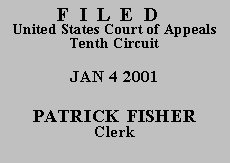

| UNITED STATES OF AMERICA,
Plaintiff-Appellee,
v.
VICTOR JESUS ROJAS-MENDOZA Defendant-Appellant. |
No. 00-1148
(D.C. No. 99-CR-157-2-B) (Colorado) |
Mr. Rojas-Mendoza was arrested in April 1999 and indicted on two counts of distributing "a mixture or substance containing a detectable amount of methamphetamine." No drug quantity was specified in the indictment text, but each count cited 21 U.S.C. § 841(b)(1)(A)(viii), which applies to distribution of 500 or more grams of methamphetamine substances. A jury found Mr. Rojas-Mendoza guilty on both counts, without considering the amount of drugs involved. At sentencing, the judge determined that Mr. Rojas-Mendoza should be held responsible for distributing 1.6 kilograms of methamphetamine and, after downward adjustments based on the United States Sentencing Guidelines, sentenced him to 121 months' imprisonment.
The procedures followed in Mr. Rojas-Mendoza's trial and sentencing were consistent with the well-established principles of the time. The procedural landscape changed, however, with the Supreme Court's Apprendi decision in June 2000. Apprendi established that, "[o]ther than the fact of a prior conviction, any fact that increases the penalty for a crime beyond the prescribed statutory maximum must be submitted to a jury, and proved beyond a reasonable doubt," id. at 2362-63. We recently held that the quantity of drugs involved in an offense is one such fact. See United States v. Hishaw, No. 99-6258, __ F.3d ___ (10th Cir., Dec. 20, 2000). The new Apprendi requirements apply to this case upon direct review. See Griffith v. Kentucky, 479 U.S. 314, 328 (1987).
While Apprendi did not address which facts must be included as elements of an indicted crime, Mr. Rojas-Mendoza argues the logic of Apprendi suggests that indictments must now specify sentence-enhancing facts such as drug quantity. Although Mr. Rojas-Mendoza's indictment cited the statutory subsection that applies to over 500 grams of methamphetamine substances, giving him some notice of the amount the government sought to hold against him, statutory citations are not sufficient substitute for missing elemental facts. See United States v. Brown, 995 F.2d 1493, 1505 (10th Cir. 1993). The failure to specify an elemental fact in the indictment text is a jurisdictional flaw rendering an indictment legally insufficient to support a conviction, see id., and so Mr. Rojas-Mendoza argues his conviction cannot stand. It is beyond question, however, that Mr. Rojas-Mendoza was indicted and convicted for distributing some appreciable quantity of methamphetamine under 21 U.S.C. § 841. His conviction can be supported under section 841(b)(1)(C), which applies to distribution of a controlled substance without regard to quantity enhancements.
Mr. Rojas-Mendoza points out that section 841(b)(1)(C) sets forth a different range of penalties from the enhanced section under which he was convicted, providing for sentences of "not more than 20 years" as opposed to "not less than 10 years or more than life." He asserts that his sentence was determined by the 10-year minimum of the enhanced provision, and that the logic of Apprendi implies that facts which trigger application of a statutory minimum must also be determined by a jury beyond a reasonable doubt. There is some logic to this argument, as discussed in the Apprendi dissent, see 120 S.Ct. at 2385 (O'Connor, J., dissenting). However, Apprendi did not overrule the Court's earlier decision in McMillan v. Pennsylvania, 477 U.S. 79 (1986), which held that judges may make sentencing decisions within the prescribed statutory range. See Apprendi, 120 S.Ct. at 2361 n.13 ("We do not overrule McMillan. We limit its holding to cases that do not involve the imposition of a sentence more severe than the statutory maximum for the offense established by the jury's verdict . . . ."). Consequently, the rule of Apprendi applies only to cases for which a sentence was imposed beyond the statutory maximum; McMillan continues to apply to all other cases.
Although drug quantities were determined by the sentencing judge in this case, "as long as the defendant's sentence falls within the maximum established by statute, Apprendi does not foreclose consideration of drug quantities beyond the offense of conviction." Hishaw, 99-6258, F.3d (10th Cir., Dec. 20, 2000). Mr. Rojas-Mendoza's 121-month sentence fell within the 20-year maximum of section 841(b)(1)(C), and thus Apprendi can offer him no relief.
We AFFIRM Mr. Rojas-Mendoza's conviction and sentence.
ENTERED FOR THE COURT
Stephanie K. Seymour
Chief Judge
*.After examining appellant's brief and the appellate record, this panel has determined unanimously that oral argument would not materially assist the determination of this appeal. See Fed. R. App. P. 34(a)(2) and 10th Cir. R. 34.1(G). The case is therefore submitted without oral argument. This order and judgment is not binding precedent, except under the doctrines of law of the case, res judicata, or collateral estoppel. The court generally disfavors the citation of orders and judgments; nevertheless, an order and judgment may be cited under the terms and conditions of 10th Cir. R. 36.3.